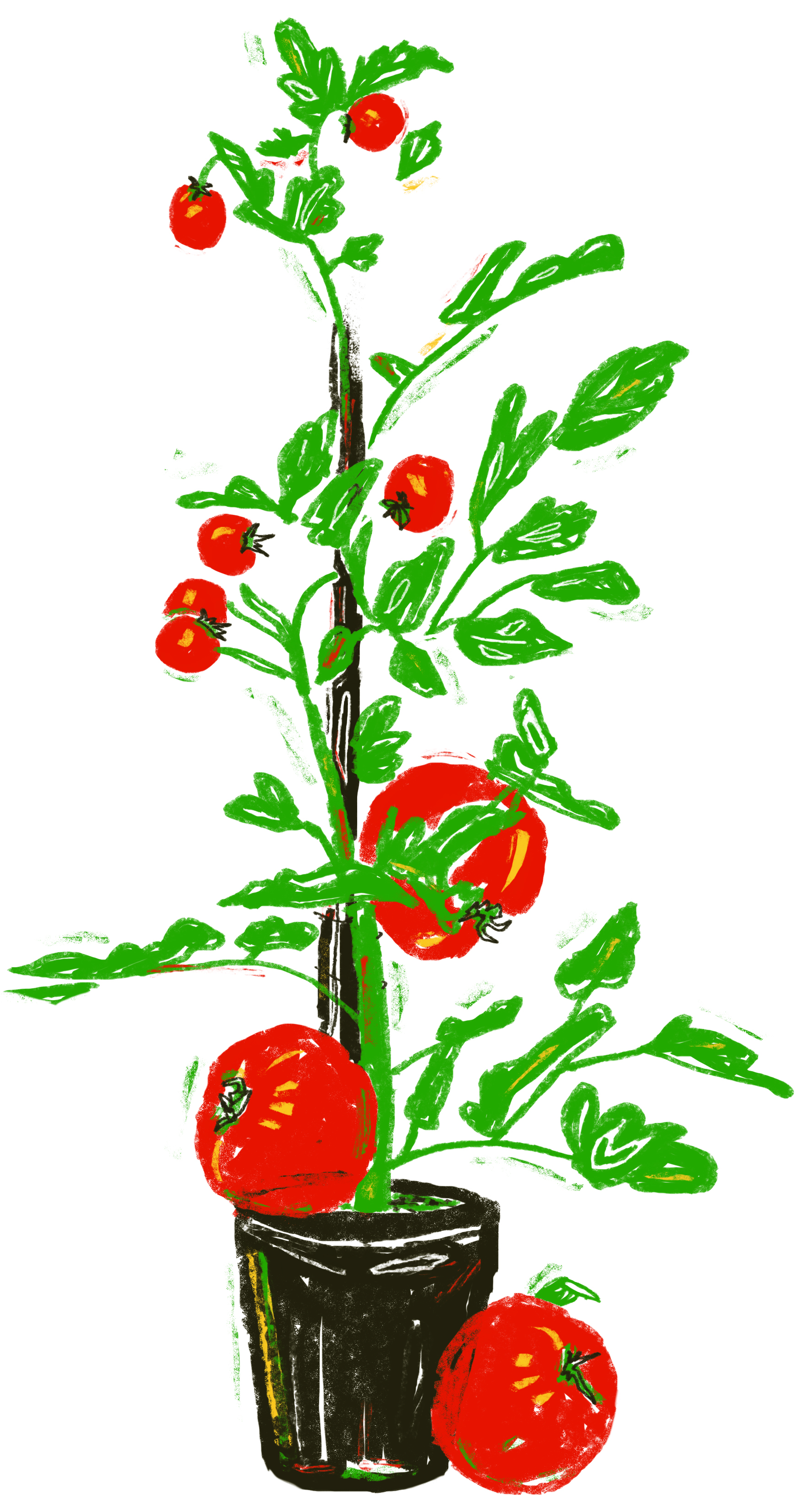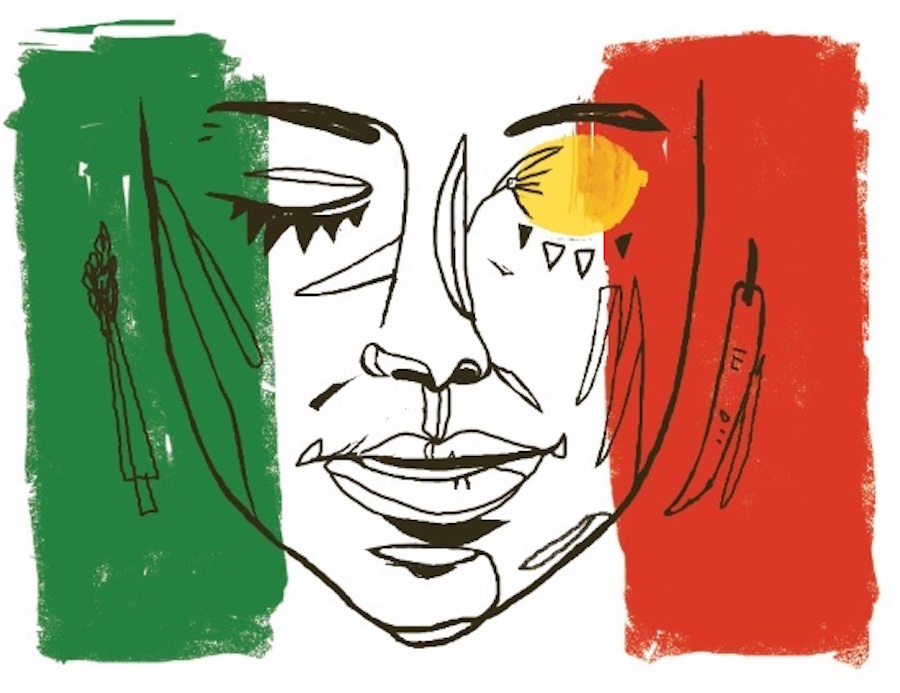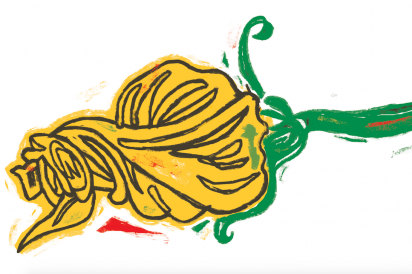Travel Through Your Garden
It was a point of pride for my dad to have been the first of his family to purchase land in America. Once he had, he did as many first-generation Italian immigrants did once they had access to their own garden: He planted fig, peach, plum, pear and crabapple trees plus a grape arbor. Beds along the perimeter of the garden contained staked tomato, eggplant and pepper plants with a zucchini vine trailing around the bed and some basil in pots.
This was the 1970s and my father was relying on seeds from traditional sources, especially the Burpee seed catalog. Those tomatoes may have been a basic beefsteak,  but were still better than anything you could get the grocery store. When we moved into my childhood home and I took over tending my father’s garden, we continued planting the same annuals.
but were still better than anything you could get the grocery store. When we moved into my childhood home and I took over tending my father’s garden, we continued planting the same annuals.
In 2007, my husband and I took a trip to Italy. We stayed with friends in a house outside of Florence and we took over the cooking duties for the group. I loved going out to the garden to pick lemons and fresh herbs to add to our simple meals. In this countryside garden, not a raised bed was to be found. Instead, the property was filled with fruit trees, perennial and wild flowers plus pots and planters by the kitchen door filled with herbs, cherry tomatoes and long red chili peppers.
Upon our return from vacation, I thought about all of the gardens I strolled through when I studied interior design for a summer in Italy. I remembered the one we stumbled upon while lost in Siena one day, a postage-stamp-sized backyard garden tended by an octogenarian couple.
I switched our focus to plants with permanence, those that thrived by neglect and offered one of the following requirements: edible, herbal, medicinal or happy pollinator. We built a bed for asparagus, which should pump out about five pounds of spears each year for next 10 years. We experimented with artichokes and—through trial and error and finally the construction of an artichoke greenhouse—we’ve grown dozens of baby artichokes for the last two years. We bought dwarf varieties of lemon, red grapefruit and blood orange trees that over winter in the laundry room and have produced tiny but delicious fruit. Perennial herbs, edible flowers and lettuces that bolt and reseed have added complexity and flavor to many dishes. If I planted annuals, it was heirloom varieties of tomatoes and peppers and long vines of Zucchini de Fiori, a variety that produces copious amounts of flowers and only rarely an actual fruit.
Everything that grew, every meal we made with the bounty of our garden, was a story of our past. Nothing brought back our mutual Italian immigrant family childhoods more than a tomato sandwich with a side of zucchini blossoms stuffed with cheese and fried. Asparagus cooked into a delicious risotto brings back a meal I ate in a restaurant near the Piazza Navona. The oregano that grew like a lawn was just like the memory of standing on a patch of it in the Villa Adriana outside of Rome. The rosemary reminded me of the huge bushes of it growing on the patio of the house we stayed in outside of Florence; the lemon tree is a memory of that garden in Siena.
If food is an expression of our culture and a reflection of our lives and we take on the responsibility to grow food in our gardens, then why not use your garden as a way to celebrate your life? Why go through the process of planting annuals year after year, a system that to me only results in a poor ratio of work to enjoyment. Use your garden as a palette to revisit the people, places and times that make you who you are.
Many of our culturally significant dishes rely on specific ingredients that are difficult to find via traditional sources. Herbs and hot peppers are perfect for growing in containers in typically small Bronx backyard gardens, so search out sources and experiment!
At the Arthur Avenue Market, Liberatore’s Garden sells seeds from La Semiorto Sementi, an Italian producer. I have purchased seeds from him for years and have had success with artichoke, zucchini, hot peppers and arugula. Good-quality seeds with great germination rates.
Fedco is a fabulous source. Their catalog is a work of art that I look forward to every year. This year I am experimenting with culinary cumin, epazote and lemongrass.
Baker Creek Heirloom Seed Company (www.rareseeds.com) and Southern Exposure Seed Exchange (www.southernexposure.com) are other good sources for hard-to-find varieties. I recently picked up a bunch of seeds from these producers at a free seed giveaway hosted by the NYC Compost Project.
If you are looking to order plants instead of seeds, I recommend ChilePlants.com (www.chileplants.com). I have ordered from them a few times and the plants are good quality with an extensive catalog. Sorting through 500 varieties of peppers might sound daunting, but they have a terrific search engine that really lets you hone in on what you’re looking for.
We purchased our citrus trees from Lemon Citrus Tree (www.lemoncitrustree.com). The trees come with a three-year guarantee. They have many varieties of dwarf fruit and nut trees, non-GMO, and I can tell you that they will replace a tree that dies.





